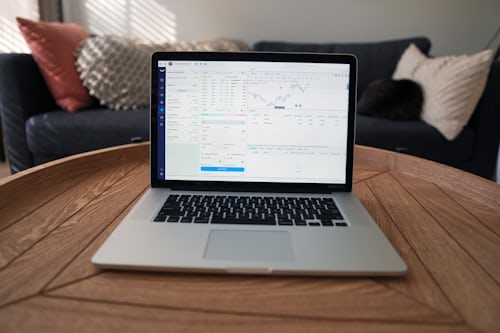Price-to-cash flow ratio explained
Price-to-cash flow ratio explained - calculation and examples
On this page I explain step by step and how to use it for stock analysis. Learn the most important info about cash flow, advantages and disadvantages, calculations using real examples.
Definition and meaning of cash flow
A company's cash flow represents the actual profits that are freely available to the company. Mistakenly, many investors assume that the annual profit of a company reflects the real profit. This is incorrect, because only the cash flow takes into account tax aspects and depreciation as well as financial returns for the formation of reserves. At the end of the calculation, the pure profit remains, which realistically reflects the earning power of a company.
Earnings power is an essential factor in investing. The better a company's earning power, the more crisis-resistant it is. Producers or service providers with insufficient cash flow and low earning power often have high liabilities to lenders and are limited in their financial room for manoeuvre. Another term often used in this context is liquidity. In uncertain times, such as rapid price fluctuations and the like, companies with reduced liquidity can find themselves in a financial predicament.
Cash flow can be used to identify companies that are in danger of faltering economically. A high annual profit often suggests liquidity and profitability to investors, which may only be true to a limited extent. Therefore, cash flow is important because investors can determine profitability. Thus, high turnover can lead to insolvency if profits cannot cover fixed costs. Consequently, turnover is not decisive, or is only significant to a certain extent.
The composition of the cash flow
The starting point for determining the cash flow is the profit earned. The expenses are then balanced against the profits in order to determine the earning power in Metatrader 4 Exness terminal. The profit is put in relation to the expenses, such as personnel costs and debt payments. Acquisition costs for material goods are taken into account and much more.
The remaining amount, or the balance, ultimately results in the cash flow, i.e. the financial flow that remains at the company's free disposal. Cash flow is not only of fundamental importance for investors, but also for companies themselves. With the cash flow, entrepreneurs can check their own economic activity for profitability. If the value is negative, it is a so-called cash loss. In such cases, restructuring measures are necessary to get out of the negative balance.
Different types of cash flow
There are different ways of calculating the cash flow. Three variants that can be found in the quarterly reports of companies are the operating cash flow, the financing cash flow and the investing cash flow. They are published under the heading Cash Flow Statements.
- Operating cash flow
- Financing Cash Flow
- Investing cash flow
Operating cash flow
The operating cash flow is generally used for the calculation of the KCV value because it is more informative. In this variant of the cash flow, the cash flow of the core business is balanced with the income and expenses. The other methods refer to one aspect of the business.
Investing cash flow
Investing cash flow is about the presentation of cash flows that have been required for new acquisitions. Both investment and disinvestment of fixed assets are possible. It is therefore the purchase and sale of material goods.
Financing cash flow
The financing cash flow indicates the development of cash and cash equivalents. Investors can use the financing cash flow to see which funds the company is using to finance itself. In this way, conclusions can be drawn about liquidity.


